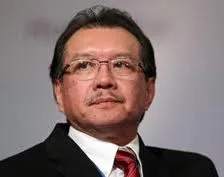
Bank Indonesia identifies 3 bank ownership standards
Investors wanting to own 40 to 90 percent of Indonesian banks should be healthy, should be listed and agrees to buy debt certificates that can be converted into equity.
In the Bank Indonesia Regulation on Banking Ownership Structures, BI differentiated three categories — ownership of up to 40 percent, up to 30 percent and up to 20 percent.
However, Bank Indonesia deputy governor Halim Alamsyah said exceptions were permitted, and investors could have more than 40 percent of the shares in a bank if the central bank is satisifed about the manner it managed itself, that it was capable and beneficial to the economy.
“Banks that can apply for more than 40 percent have to meet three requirements. First it should be healthy, second it should be listed and third the bank agrees to buy debt certificates that can be converted into equity,” said Halim.
The third requirement was linked to the Basel III regulations on the principles of bail in or buffer conservation. It is to prevent the use of public money to help the bank if it comes into trouble.
“The principle is that it should help itself first. Therefore the potential owner should be willing to buy debt certificates that can be converted into shares,” he said.
Potential investors wanting to buy more than 40 percent of the shares in a banks have to sign the commitment to provide back up reserves in the form of Contingent Convertibles Bonds or CoCo bonds.
“Investors should buy from investees or investment banks and whenever they want to raise funds to expand share ownership, or when incurring losses, it can become a tier 1. The equity or shares can become tier 1 capital while the CoCo bonds become tier 2 capital and need to be first converted before becoming Tier 1 capital,” Halim said.
He said that if an investor bought a bank for Rp 500 billion with more than a 40 percent of stake, the investor had at the same time the obligation to buy or issue subdebts that can be converted into shares. Therefore besides injecting capital, investors have to provide subdebts to the bank they purchased.
“If the investor buys it, the subdebt in the long term should be converted into shares, so that the composition of the shares rises. Therefore the value of the purchase is not yet net added with the subdebts. In reality, this is similar to an escrow account,” Halim added.
For more.




![Lorem Ipsum [ABF 1]](https://cmg-qa.s3.ap-southeast-1.amazonaws.com/s3fs-public/styles/exclusive_featured_article/public/2025-03/a_hand_pointing_to_a_futuristic_technology_5b87c9d0e3_1.png.webp?itok=2w0y1WhS)


![Cross Domain [Manu + SBR + ABF + ABR + FMCG + HBR + ]](https://cmg-qa.s3.ap-southeast-1.amazonaws.com/s3fs-public/styles/exclusive_featured_article/public/2025-01/earth-3537401_1920_4.jpg.webp?itok=WaRpTJwE)







 Advertise
Advertise

